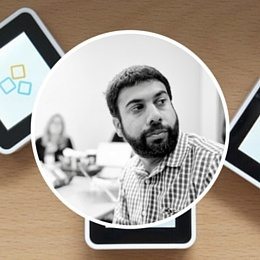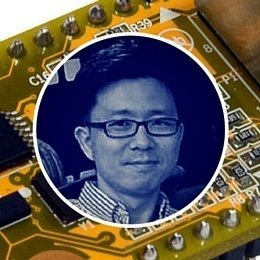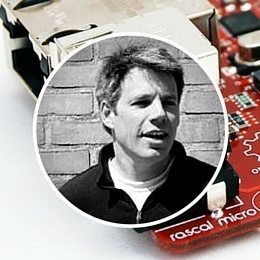Claudio Carnevali from openPicus discusses how energy harvesting will shape the IoT, his companies open source FLYPORT module, and what everyday applications he sees will be the first to be impacted by the IoT.
This is the tenth segment in the Postscapes Interview Series with some of the top people influencing the Internet of Things.
Interview:
Who are you, and what do you do?
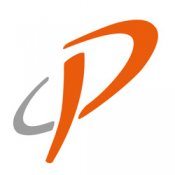
I’m Claudio Carnevali, co-founder of the openPicus project. I’m an engineer with a deep passion for hardware. Starting from childhood I began making my prototypes and sparks (sometimes) and this eventually led me to found a company that manufactures electronic boards. Playing with the Surface mount technology machines during this part of my life has proven to be very useful in my work today as I always follow hardware developments with the cost/quality vision in mind.
The openPicus project started in 2010 working together with Gabriele Allegria ( Currently the CTO of the start-up). Gabriele is also an engineer and he is more hands on with the software side of things.
openPicus is currently operating as a startup company featuring our Flyport modules and a light software framework, called openPicus framework, that enables a $2 microcontroller to manage applications and connectivity all in one package. Our platform is open source (schematics are available on our website under CC-BY-SA 3.0 Licence) and our community is now made up of more than 3,000 people that are creating great applications running on Flyport.
Flyport is a revolutionary module because it’s very small, low cost and has enough processing power to manage applications like Connected Sensors, Web based interfaces for embedded devices and Internet of Things apps.
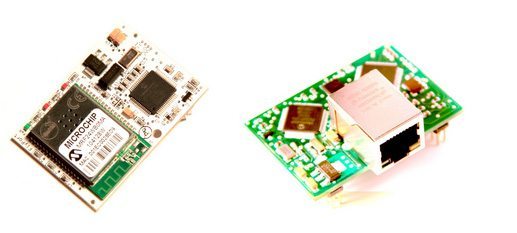
How do you view the term “Internet of Things”?
I actually just recently wrote an article on our Blog talking about this:
Instead of Internet of Things my personal way of referring to this concept is the Internet ON Things. From my point of view this small difference makes a big difference on the approach to the subject: Internet On Things puts the Cloud at the center of the new universe of possibilities that connectivity adds to devices and objects. – Full Post
But of course I accept the standard “Internet of Things” definition and I think that the boom of smartphones and low cost mobile internet access is speeding up a lot of IoT applications. I think that the IoT and Home Automation will merge and soon we’ll just talk about “Smart Living”. Everything will be easy to setup and to use and only in that moment we can say that IoT has reached the mainstream stage.
At the moment, except in just a few cases, the IoT is something for Geeks and Hackers that are experimenting with nice apps (some even using our Flyport module).
Where do you see the Internet of Things and its technologies creating the most impact?
I think that the biggest impact will be in people’s everyday life. I really don’t think that the fridge will ever talk to my oven (can you imagine how boring that conversation would be? 
For example I think that turning on lights at home will be a nice IoT application, and the house will understand and interpret our desire and act accordingly to a policy the user has set on the Cloud or the system has learnt by itself. Irrigation systems may have intelligence on-board taking data about weather directly from the Internet without the need of local sensors. Another example application could be an alarm clock that is connected to Google Traffic, so it knows where I’ve to go next morning and will wake me up accordingly to the traffic situation.
Other applications will be in fitness and healthcare, for example the Nike app for iPod is a great example of IoT that’s already on the market. So as you can see there’s not a revolution on the people needs with the IoT, the IoT will simply make our life “smarter” and more “connected”.
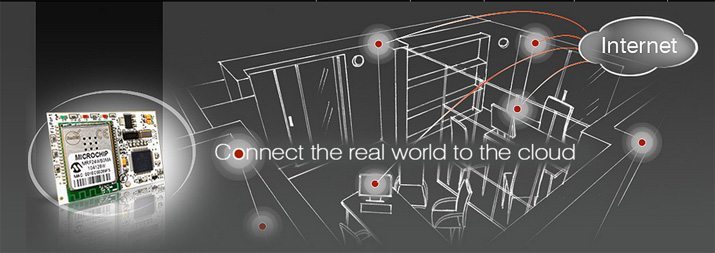

What are you currently working on or are most excited about?
We are really excited at the moment as we just signed an agreement to enter into the EnOcean Alliance. EnOcean has a technology for home automation that is based on energy harvesting. For existing buildings it’s now possible to remove standard switches and substitute them with a batteryless EnOcean compliant version that generates energy from the switch pushing action and sends data by a wireless protocol 868Mhz.
Another benefit is the EnOcean Alliance features more than 300 companies and all of the products are “talking” to each other. This is an area where other initiatives like Zigbee failed, as currently there are not a lot of Zigbee devices really compatible with each other.
I think Energy Harvesting must be the base for the IoT, if you think that by 2020 we are expecting 20 billion connected devices just imagine the number of batteries will be needed! We must finally start thinking about environment and batteries are not eco-friendly.
Shout-outs: Any sites/people/articles or books that have inspired you lately?
I read a lot on the Internet, but the most inspiring stuff has been coming from personal meetings. I’ve been travelling a lot thanks to my work and I am lucky enough to meet interesting people all the time.
I have never met any Guru, I simply try to enjoy every meeting because from any person it’s possible to learn something or at least to see another point of view. My way of life is: see, understand, think and act!
Thanks for taking the time to talk to us.
